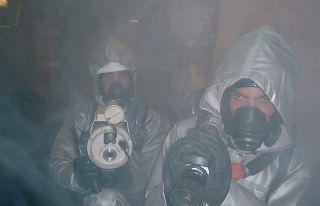From a Guest Blogger: Climate Change Brings More Storms, Fires and Disasters–Here's How to Protect Your Family in Four Simple Steps

Be Informed
What kind of emergencies can happen in your area? Know this, and the battle is half-won already.
For example, if you live in the northeast, you will likely face catastrophic blizzards in the winter, and flooding in the summer. How do you protect yourself from these types of disasters?
If you live in the north, you face tornadoes, drought conditions, and brush fires. In the south, you face hurricanes and fierce storms during the summer and spontaneous brush fires.
Knowing the terrain, and the inherent risks of where you live are absolutely essential.
Make a Plan
Emergency situations can knock out power the main power supply to your home, so how will you deal with that? Having printed materials may be important – printed materials that detail what you will do, step-by-step, in the event of an emergency.
Developing a plan in advance reduces the risk that you will go into “panic mode” when an emergency strikes. You’ll already have written details about what you should do. You won’t have to think (which is sometimes difficult to do in an emergency), you will just react and follow the plan.
Develop your plan with your entire family – don’t leave them in the dark about this.
Make sure you have a plan in case you get separated, how you will contact one another, and understand the risks and appropriate actions that may be necessary in the event of an emergency.
Figure out what local support, if any, will be available to you during an emergency. Also, find out if there is any special assistance available in the event you need to evacuate your home or if you have a family member with special needs.
Create a Simple Emergency Kit
Emergency kits don’t have to be complicated, but they do have to be complete. For example, make sure you have basic supplies like:
- Filters for non-potable water
- At least one week’s worth of clean, bottled, water
- At least one week’s worth of food supply for the whole family
- 3 ways to make a fire
- Warm blankets that are waterproof
- A spare change of clothing for everyone in your family
- Tools, like a multi-tool and a utility knife
- Rope
- First-aid kit
- A Faraday-style flashlight and radio, with alarm and warning lights
Once your basic supplies are covered, you should look into extra supplies, like a generator. Now, when it comes to generators, there are many pros and cons of diesel and petrol generators.
For example, diesel generators are reliable and robust – they last a long time.
However, liquid fuel generators do suffer a major drawback: the fuel is limited. When it runs out, there is no more power.
So, you must decide whether it’s worth the risk to have this type of generator, a solar generator, or a combination of both (diesel as the main generator and a solar backup).
Know Your Neighbours
Know who your neighbours are, whether they can or will help you, or whether they are expecting you to help them. Just as natural disasters can surprise you, so can your neighbours.
